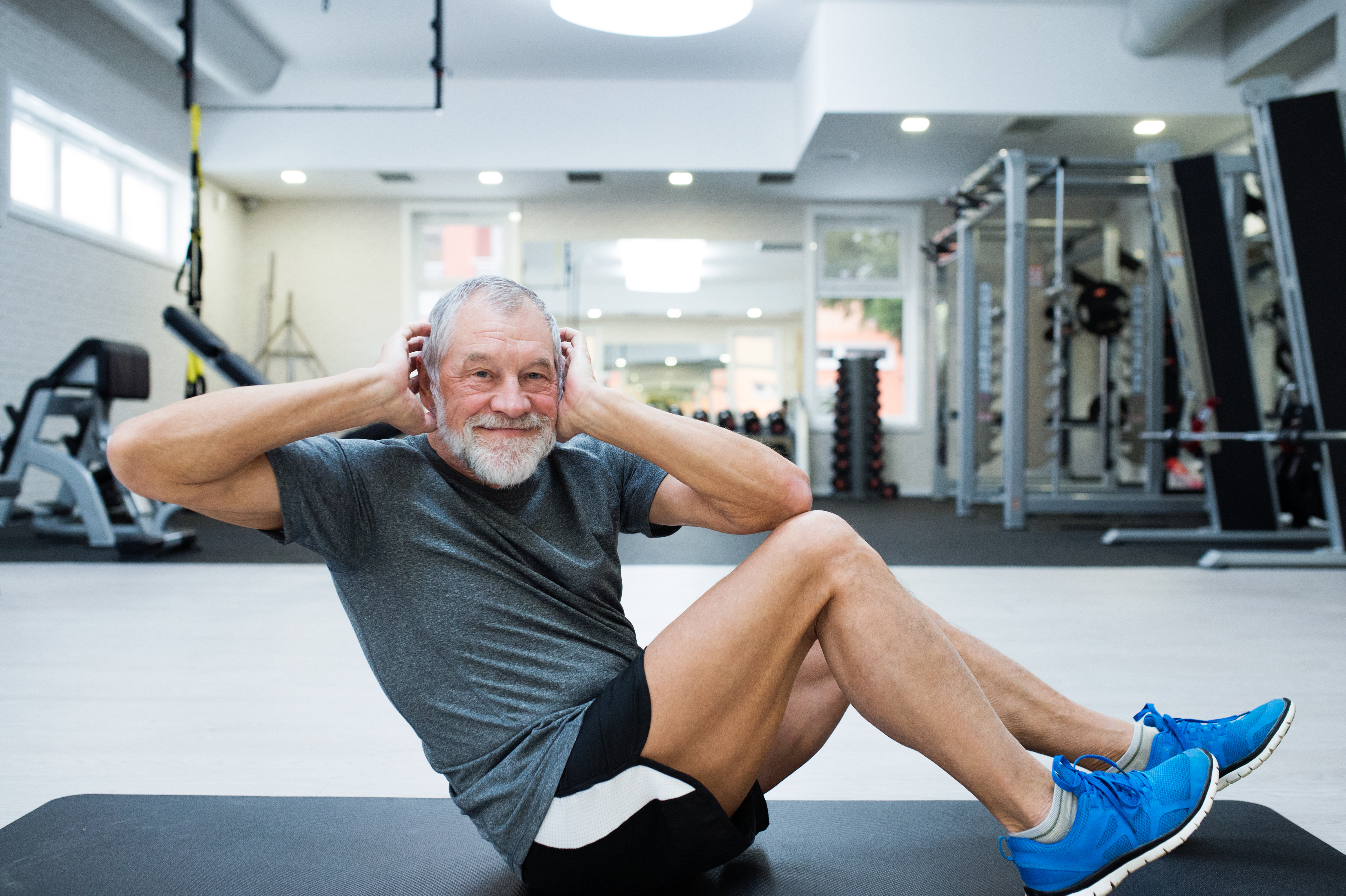What does it mean to “Engage your Core?”
What does it mean to “Engage your Core?”
Are you always being told to “Engage your Core!” but really you have no idea what that means? This article is here to debunk common misconceptions about how to “engage your core” and help you learn how to do this safely and properly.

First things first… we need fitness instructors, teachers and even healthcare practitioners to stop telling their clients to “push their low back flat into the floor.” The lumbar spine (low back) is naturally curved slightly AWAY from the floor. Pushing your low back into the floor can actually lead to low back injuries or even hernias.
If you’d rather watch a video on core engagement click HERE
Before we discuss what to do and what not to do for proper core engagement, let’s take a moment for a brief anatomy lesson. The core is not just the “6-pack muscles”, it’s actually 29 muscles that include those on the front, back, sides, bottom of the abdomen, and others that support and surround the trunk and hip region! For simplicity sake we are going to talk about your core muscles in two groups.

Group 1 is the outer unit core muscles. This includes your internal and external obliques, erector spinae, and rectus abdominals. Long story short, they help hold you upright but they also help you bend and move. Think of these as the “sprinter muscles” of your core, because they are best at fast, short movements, such as helping you twist, bend, or powerfully hit your golf ball. They aren’t meant for continuous, long-term support.
Group 2 is the inner unit or deep core muscles. These are your multifidus, diaphragm, transverse abdominis and pelvic floor muscles. If the outer unit core are your ‘sprinter muscles’ the inner unit core are the ‘marathon muscles’ of your core. Although they don’t have to contract very hard (think ~20% of their potential) to be the most effective, you should be able to sustain these low-grade contractions for a long period of time, they need to work for you all day long without getting tired.

Here are your DOs and DON’Ts to properly engage your core:
Now that we’ve got the anatomy out of the way let’s get into the functional part.
DO: Find out what “neutral” feels like.
DON’T: Force your back flat against the ground.
Instead: Lie on your back, knees bent, feet flat on the floor.
 Hands on your hips. Gently rock your pubic bone down towards your feet and up towards the ceiling. You should feel the amount of pressure on your low back change. Do this a few times and then end up in the middle of these two positions.
Hands on your hips. Gently rock your pubic bone down towards your feet and up towards the ceiling. You should feel the amount of pressure on your low back change. Do this a few times and then end up in the middle of these two positions.
From here, if you placed a very full glass of water (or wine) on your pubic bone could it rest there without spilling? If not, adjust your pelvis so that it could.
Now check in with your lower ribs on your back (closest to the ground). Is there space between them and the ground? If there is, gently relax your lower ribs down towards the ground…BUT without changing your hips!
Tip:
- You may need to take a small hand towel rolled under your low back to decrease any discomfort.
If this is difficult to do, then this is where you stop for now. You have to get this right before you can move on.
DO: BREATHE
DON’T: Hold your breath!
Instead: Set up in your neutral position. Then set up “Hang loose hands”; pinky at hip bones, thumb at ribs, fingers facing each other. Now, we add breathing:
 When you INHALE, try to relax (your diaphragm and pelvic floor drop will, belly will rise).
When you INHALE, try to relax (your diaphragm and pelvic floor drop will, belly will rise).
When you EXHALE, imagine you’re blowing out a candle (your pelvic floor and diaphragm will lift, and fingers will softly sink down and towards each other).
Practice alternating these with the following cycle: INHALE through your nose for 4 seconds and let your belly fill with air, then EXHALE for 4 seconds. Repeat!
Tips:
- EXHALE through the hardest part of any exercise.
- It’s very important not to hold your breath during any exercise or heavy lifting, do not hold your breath!
DO: Correctly engage the Inner / Deep Core muscles first.
DON’T: Engage every muscle in your core… more is not always better!
Instead: Set up in neutral with 2 fingers just inside your hip bones in the front.
GENTLY Tighten your deep abdominals. Do this by EXHALING and gently squeeze the muscles that you would use to imagine “lifting your goods” (if you are a male) or “lift a blueberry up your vagina” (if you are a female) or think of the feeling of when you are walking into cold water. You should feel your deep core muscles slightly contract under your fingers. If

you do not, then try thinking of pulling your hip bones together in the front or pulling your navel in toward your spine – but do not change the pressure your low back is pushing into the floor. The deep core muscles should only contract enough to give you slight tension felt under your fingers equal to pushing on a marshmallow or Saran Wrap. Your fingers should sink into your belly or stay in the same spot but should not be pushed up by the muscles underneath it. If your fingers move upwards it means you are trying too hard to contract – so try again with less effort. Hold this position for your exhale, then relax with a big full inhale and repeat.
Tip:
- Make sure to keep your back in neutral against the floor and do not hold your breath as you tighten your muscles.
DO: Add Movement
DON’T: Add Movement you can’t control
Instead: Set up in your neutral position. Inhale, relax let the belly fill. Exhale, through your mouth, gently engage the deep core and then slowly move one knee out to the side and bring it back in. Inhale and relax. Exhale and repeat alternating side to side. Keep the pelvis still during this.

(copywrite: physiotec.org)

DO: Add Outer Core!
DON’T: Push up/ out with your belly. No Doming!
Instead: Finally you’ve made it to something a bit more exciting!
The rule here is inner/ deep core comes on first and then outer core comes on after to aid movement.
 We are going to do a Birddog exercise.
We are going to do a Birddog exercise.
Try this on all 4’s. Knees under hips, hands under shoulders.
Step 1. Inhale, allow the belly to fill with air
Step 2. Exhale, engage deep core. Now think of pulling lower ribs together and lower ribs towards your hips to create a stable core. The goal of this exercise is to keep your back flate and your trunk still while you move the arms and legs.
Step 3. Once the core is active, stretch one arm out long in front of you and the opposite leg out behind you. Hold for 2-5 seconds then ring the limbs back in and repeat.
If you are ever doing a core exercise lying on your back take a look at your stomach, if you see it “doming” or pushing up into the air, please stop the exercise and try it again engaging inner core first and layering on outer core. If the doming still persists it means that that particular exercise is too challenging for you at this time.
Come in to Metrotown Physio to see Diane for a clinical pilates physiotherapy session and get your personalized injuries assessed and treated and learn to use your core properly!
Call 604-430-3066 and our reception team will help you book the right appointment for you.


